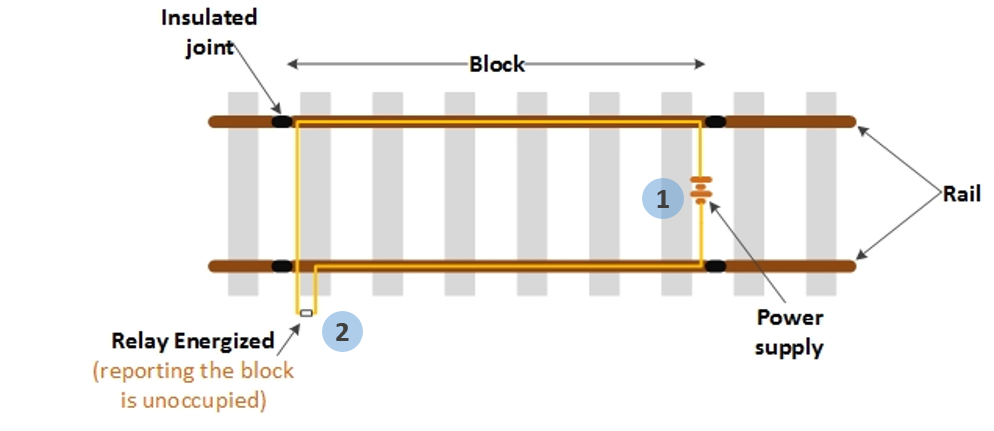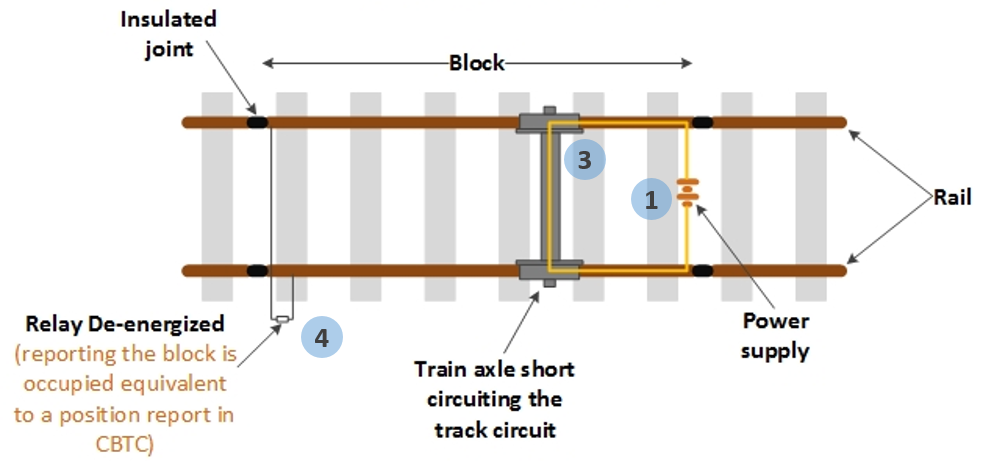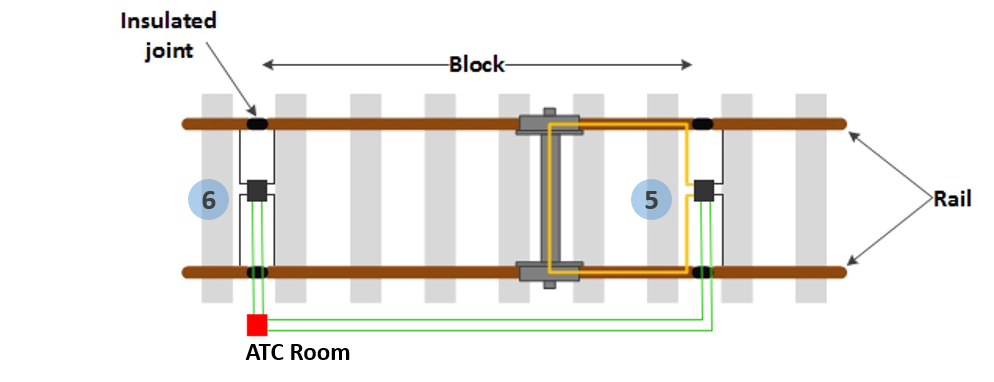Track Circuit
Most railroads use track circuits to determine which sections of track are occupied by trains. These devices are actually fairly simple in design, and have been in use since 1872.
In order for the system to work, tracks are divided into blocks of varying length. Each block is divided from the adjacent blocks by an insulated joint between rails. Blocks often have signals at each end to control train movements. Signals are transmitted to the cab of the train, and are not present next to the tracks except at switches. Each block has a track circuit which determines whether a train is present.
Track circuits work by running a circuit using the rails to connect a power source at one end of the block with a relay at the far end. The relay and power source are connected to each rail by cables. As long as the circuit is complete, low voltage power flows down one rail, through a relay, and returns to the power source via the other rail. If the circuit is complete, the relay will be energized, which keeps signals in the “clear” position. If the circuit is broken, the system fails in a safe manner. A broken rail or a failed power source causes the relay to become de-energized and report the section of track as occupied.
Unoccupied Track Circuit; The power source is located at the number “1”, with the relay shown at number “2”. The completed circuit is shown in yellow on the diagram.

Occupied Track Circuit; A train is detected because it shorts the circuit. In railroading, this is called “shunting” the circuit. When a train enters a block, the metal wheels and axle conduct the circuit as a short cut which bypasses the relay. This de-energizes the relay, which causes signals to report the block as occupied. This is reflected in diagram: “1” shows the power source, “3” is the wheel/axle of a train, and “4” is the de-energized relay.

Metro’s Track Circuit system is a little more advanced. In Metro’s case, each block has a relay on each end called a “Wee-Z bond”. These bonds are split between blocks. Each one acts as a transmitter for one block and a receiver for the adjacent block. If a given block’s transmitter (“5”) and receiver (“6”), located on opposite ends of the block, have a complete circuit, the block is considered unoccupied, and therefore safe for trains to enter.

If, however, a train is in the block, the transmitter/receiver circuit is broken, stopping subsequent trains from entering the block. Speed commands are sent to the train in the block through the transmitter bond. The commands are sent as high-frequency audio waves through the running rails. The ATC computer uses data from the blocks to determine which blocks are occupied, and therefore how to space trains.
In general railroad signals work like traffic signals – they can’t prevent a train from passing a stop signal, they just alert a driver to stop. However, many railroads and transit operators have systems which can stop a train. When red, the arm is in the up position, and it hits a valve on trains that pass it which applies the emergency brake.
Metro’s system uses Automatic Train Control (ATC) to enforce stop commands and keeps trains safely spaced by controlling train speeds. Because signals are not present on the wayside, operators know whether it is clear to proceed through cab signaling. The ATC system sends speed commands to the train and the speed appears on the operator’s console. In both manual and automatic operation, the ATC system automatically applies the brakes if the train’s speed exceeds the regulated speed for more than 2 seconds.
Source: ggwash.org; cbtcsolutions.ca
